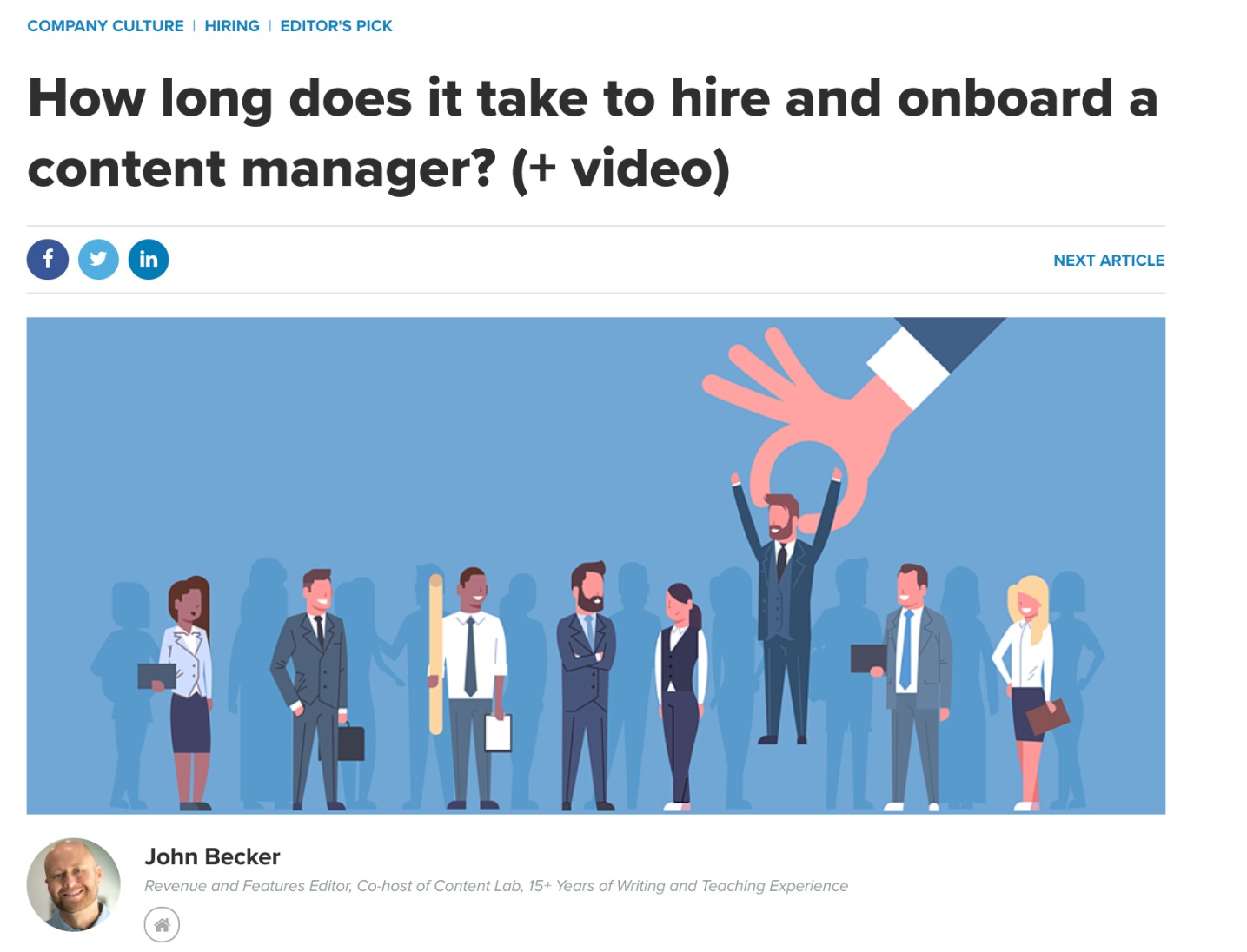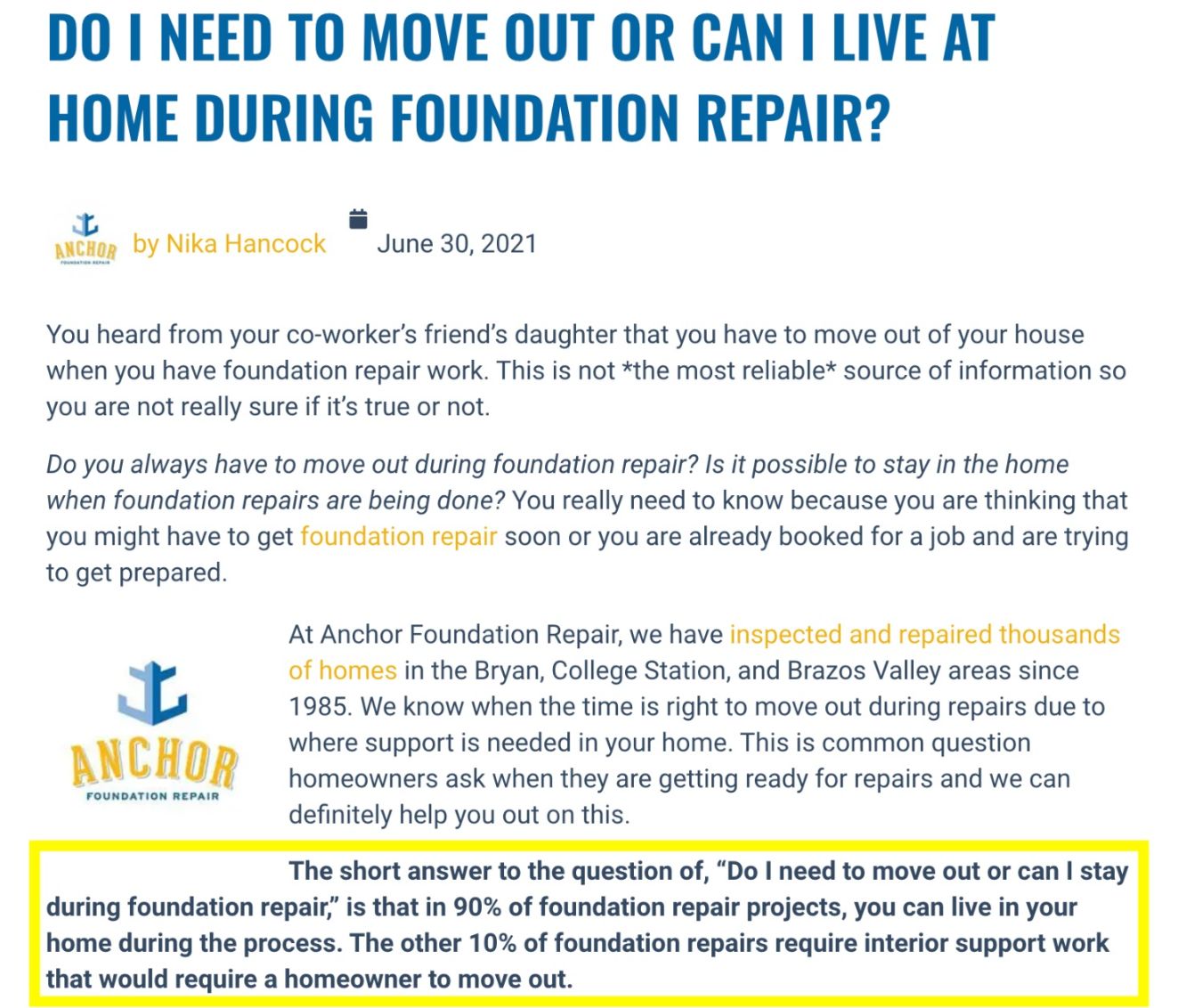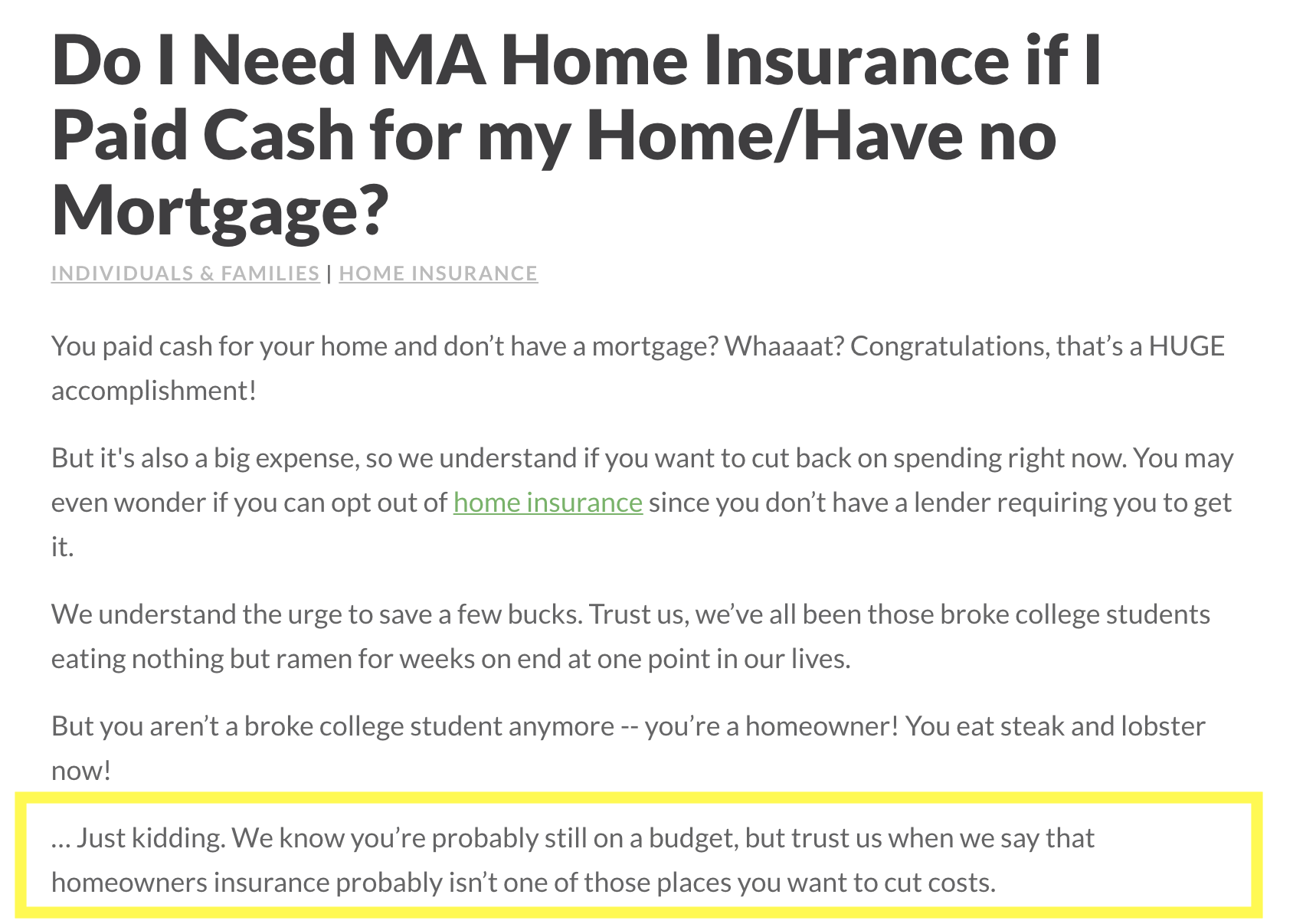Topics:
Content Managers Content and Inbound Marketing 101 Getting Started with They Ask, You AnswerSubscribe now and get the latest podcast releases delivered straight to your inbox.
Creating Inbound Marketing Content That's The Right Length To Drive Traffic And Close Sales

By John Becker
Aug 31, 2021

If you’re a content marketer helping your company succeed with They Ask, You Answer, you’re likely being pulled in two directions at once:
- Your sales team wants content that directly addresses customer questions so they can plug it right into the sales process. When prospects can read a thorough, clear answer to their question, the subsequent sales call can move more quickly and be more productive.
- At the same time, your marketing team wants broad, top-of-the-funnel content that’s going to rank well in search results and drive hordes of organic traffic to your site.
You know that content length is an important factor in SEO, but your sales team needs to close deals — and they’re wary of sending an extra long article that might scare prospects away. So, can a single piece of content be useful in both cases?
At IMPACT, we’ve helped thousands of companies build content marketing funnels and content creation programs that both bring in qualified buyers through organic search and help the sales team close deals faster.
The short answer is yes, the same content can do both.
We’ll explain exactly how you can help both camps at once — and then we’ll look at specific examples of inbound marketing content to see how it’s done.
Can the same piece of content serve both ends?
At the end of the day, you have limited content-creation resources. Maybe you’re the only writer and you’ve got a limited number of hours each week to produce the content everyone wants. So, can you efficiently please both camps at once?
What marketing wants
According to SerpIQ, the average length of an article that ranks No. 1 in Google is 2,416 words. While longer content is not guaranteed to rank higher, it’s clear that Google favors thorough content that’s been linked to by other reputable sites.
So, when you’re writing with your marketing hat on, you’re inclined to be more detailed and exhaustive. When you’re writing for a general audience, you’re naturally going to be broader, covering all relevant bases.
What sales wants
Your sales team wants to close deals. They might be wary of sending the content equivalent of War and Peace to a prospect for fear of scaring them away. Therefore, they might favor shorter, pithy sales enablement content that doesn’t bog the reader down with extra detail they don’t need.
When you’re writing for inbound sales prospects in your pipeline, you’re likely to use specifics from your business — perhaps with details that are unique to your business and its offerings.
But this doesn't mean that the very nature of these two content types is different. The same piece of content can serve both audiences.
What your readers (actually) want
Think about how people actually engage with your content.
If a casual reader in the early stages of a buyer’s journey comes upon an article focused at the top of the inbound marketing funnel, they might skim it, glancing at the headers, at the bolded text, reading the sections they find relevant.
For someone closer to the decision stage, their approach is different. They’re more likely to read the text thoroughly, taking in as much as they can.
In other words, the same piece of content might be read differently depending on the reader’s needs — so a thorough, longer article could satisfy both parties.
Kevin Phillips, IMPACT’s senior content trainer, asks his clients to think about it this way: If someone is sincere about wanting to buy from you, are they going to be scared away by a longer answer to their question? “Serious prospects shouldn’t mind a bit more information,” he says. “As long as you structure it properly.”
IMPACT sales veteran Melissa Prickett agrees. She likes to send prospects a longer article that is front-loaded with the most important information.
In other words, she’s fine sending along a full-length, search-engine-optimized article that answers a customer question if she’s confident that they can find their answer high up in the text. The rest of the article is there if they want more context and depth, but they shouldn’t have to dig to find the answer they’re looking for.
(Let us pause and take this as a good reminder of one of our prime directives: Get to the point!)
In other words, if we’re writing well — and keeping our reader in mind — we should be able to use the same piece of content in both contexts.
In practice: 3 examples of content that pleases everyone
So, what does this look like in the real world? These two examples show how one piece of content can serve as both a traffic driver and a sales-enablement piece.
1. IMPACT: Onboarding a content manager
Here at IMPACT, we train companies to succeed with our They Ask, You Answer framework, which helps them drive traffic and shorten their sales cycle with content.
To build a content library that answers customer questions, we guide our clients to hire an internal content manager to do a lot of the heavy lifting. Heck, you might actually be a content manager if you’re reading this.
Anyway, I wrote a piece for our sales team to address this common concern among our customers: How long does it take to hire and onboard a content manager.
Basically, we want to get ahead of an underlying worry that our buyers have. They might think that hiring for this position is going to take forever and will be way outside their comfort zone.
So, I wrote this:

This article is intended to assuage their fears. Therefore, I provide relief really early on — at the end of the third paragraph, actually.

In other words, I provide a quick answer that addresses their concern directly, but then I go on to provide more detail. If they're satisfied, they can stop, if they want to keep going, they can, but they don't have to keep going to find their answer.
If they want to get more information, they can dive into what I provide next:
- How to hire a content manager (in four steps).
- Resources to help them hire the right person.
- Tips for effective onboarding.
This piece of content serves the sales team (by providing a quick answer to a burning question, followed by related information) and that’s loved by Google (1,800 words of thorough topic coverage with many relevant links).
If you Google “onboarding a content manager,” this article comes up first (with a featured snippet!). And, if you check the traffic records from our sales team, it’s frequently sent to prospects.
We call that a win-win. The same piece of content accomplishing both goals at once.
Now, here's another example from an IMPACT client:
2. Anchor Foundation Repair: What to expect during a foundation repair
The biggest fear for any customer during a major home improvement project is this: “How much will my day-to-day life be affected while the work is being done?”
Texas-based Anchor Foundation Repair addresses this question head-on in this 1,900-word article about whether you can stay in your house while your foundation is being repaired.
This is certainly a question that many potential customers will type into Google, and the article is well-optimized for search with clear headers, images, diagrams, and more.
At the same time, the company’s sales reps use this piece with prospects. Once again, you can see a clear answer to the question in the fourth paragraph: In 90% of cases, you do not need to move out during a repair.

Then, the article goes on to address multiple related questions that customers might have, such as:
- How long do foundation repairs take?
- How often do foundation repairs involve plumbing repairs?
- The pros and cons of stabilization vs. leveling.
- How to know if settlement is happening at your home.
Again, we see a full-length article optimized for sales enablement because the quick answer comes near the top. It's also SEO-ready, with length, detail, keywords, and logical structure. The same content can serve both ends, provided you keep both users in mind.
Here's one more from another client:
3. Berry Insurance: Do I still need home insurance?
Major insurance companies have huge marketing budgets and broad brand recognition. Local, Massachusetts-based Berry Insurance has been in business for a hundred years, offering the personal attention that big companies can’t.
Insurance touches everyone’s life, but few understand its intricacies. Berry seeks to provide thorough but clear explanations of the questions on customers’ minds — wherever those customers are in their journey.
Here, Content Marketing Manager Corin Cook addresses one of those questions head-on: Do I still need home insurance if I don’t have a mortgage?
Again, you can get a quick answer within the first few paragraphs: You should not scrimp on home insurance, no matter what. Followed by more detailed and relevant information.

What follows is a more thorough explanation (about 1,500 words long) that explains different types of coverage, including what claims are typically covered.
While this piece certainly works well as a search play, it’s also used in the sales process when a customer might decline certain coverage when they’re talking about other policies.
Again, a win-win.
Bonus: Notice how the article includes several relevant videos to supplement the text.
Remember, supplement your articles with content guides
Keep in mind, articles are not your only tool for answering buyer questions — at any stage of the buying process. Chances are, a single article is insufficient for answering a slew of buyer questions. You might want to produce a pillar or a guidebook to provide a more complete resource. These, too, are loved by Google and sales reps alike, but you’ll have to suit your product to your needs.
Kevin Phillips outlines four types of guides that your customers can use to self-educate during their buying journey.
- Info guide: Aimed at top-of-the-funnel prospects, info guides offer comprehensive coverage of a particular topic. For example, if you have a landscaping business, you might publish an info guide on common weeds that invade suburban lawns.
- Buyer’s guide: This guide provides details to help a buyer make the right decision for them. If the info guide covers a topic in full, a buyer’s guide focuses on various solutions to a common problem.
- Seller’s guide: Out of many solutions, you hope your prospect chooses yours. A seller’s guide includes everything someone needs to know to buy from you: Details about your offerings, cost, comparisons, social proof, and more.
-
- Customer guide: After someone makes a purchase, what do they need to know to have a great time with what they’ve bought? A customer guide helps them enjoy their product or service to the fullest.
Although these are distinct, there can be overlap between them, so plan accordingly. Although these are more labor-intensive to produce, the payoff makes it worthwhile.
Here at IMPACT, our guidebooks are among our most downloaded and shared content, and our buyer's guide is far and away the No. 1 asset used in the sales process.
For a more in-depth look at these types of content, check out this article that explains these assets and how to use them — or head over to IMPACT+ and take Kevin’s course on the subject.
Helping your searchers and your buyers (at the same time)
As Marcus Sheridan frequently says, your content is the soul of your business.
If you’re doing They Ask, You Answer properly, content should figure into all aspects of your customer journey: utilized by the marketing and sales teams to bring in traffic, to help site visitors become leads, and to help leads become customers.
Therefore, the planning and creation of that content should be undertaken with great care.
If you plan properly, you can produce one piece of content that is optimized for search while also being useful to your sales team in closing deals.
When you’re killing both birds with a single content stone, you can give yourself a high-five. You’re doing master-level They Ask, You Answer: Addressing customer questions wherever they come up, whether from a Google search or in a sales call.
(And if you want more examples of inbound marketing that works, we've got an article for you.)


Order Your Copy of Marcus Sheridan's New Book — Endless Customers!